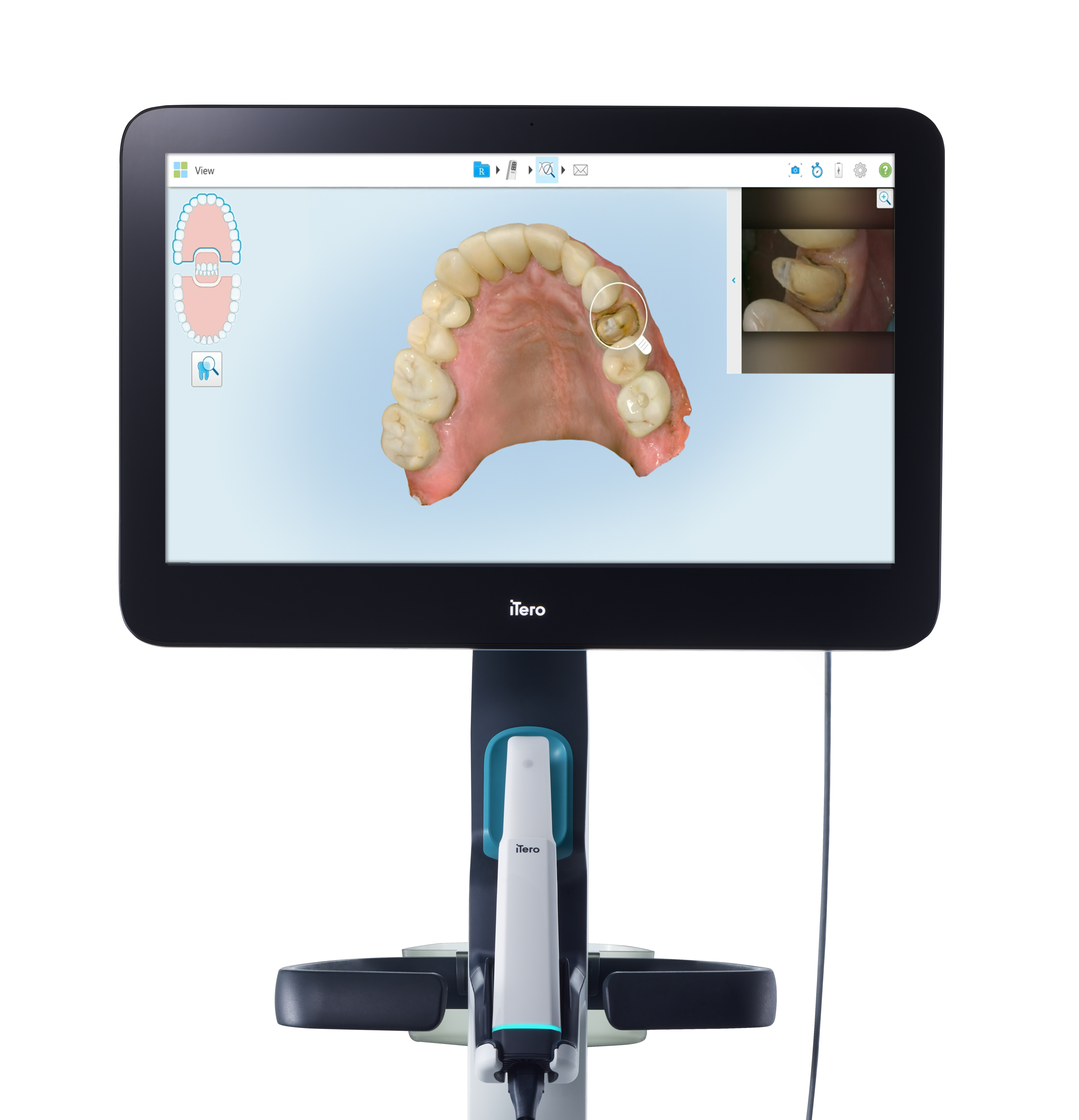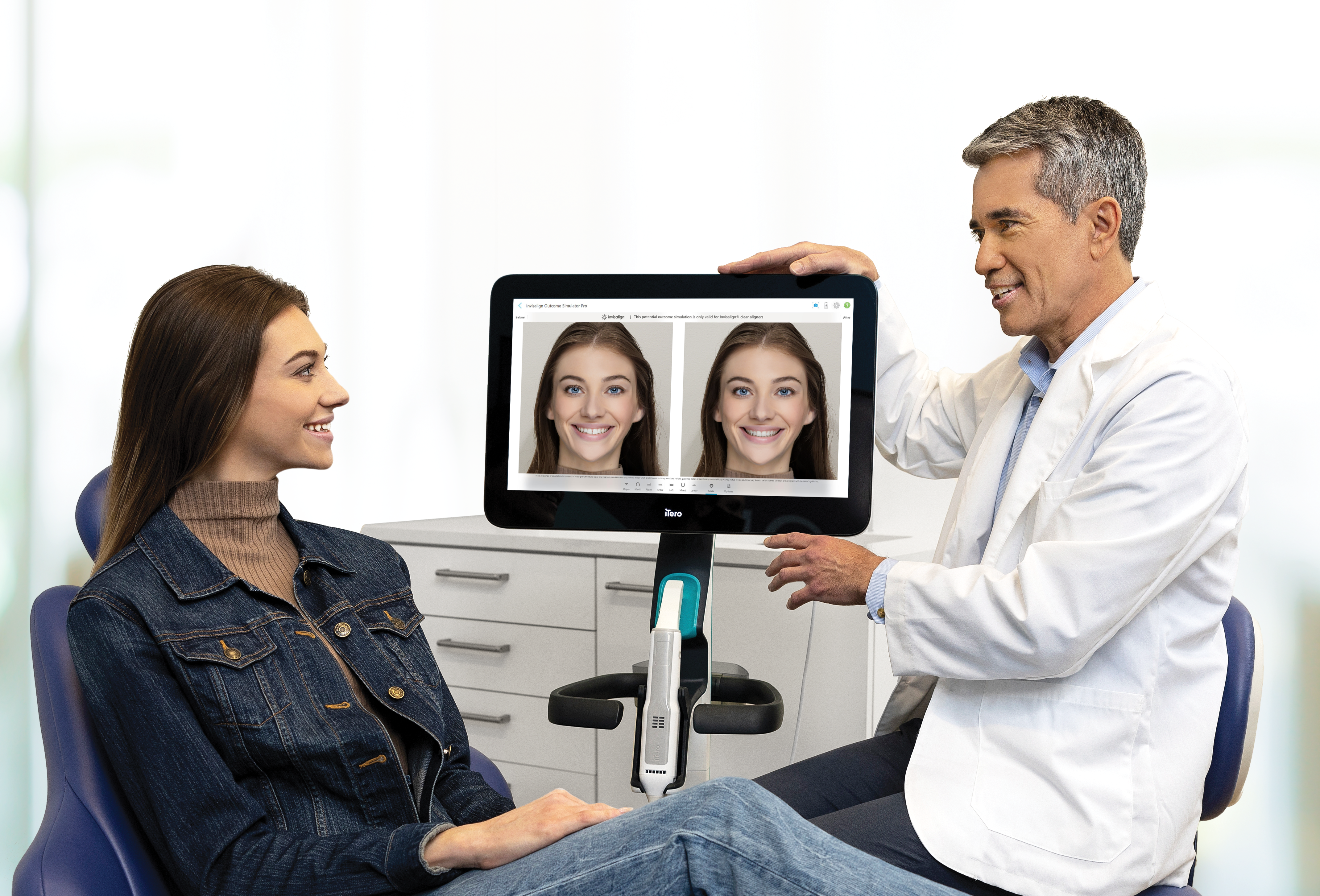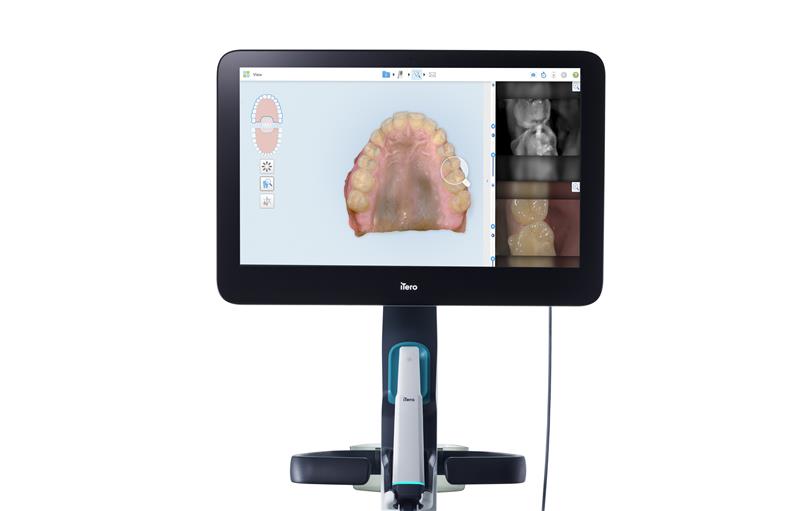1. Compared to the field of view of the iTero Element™ 5D dental imaging system, when the iTero Lumina™ intraoral scanner’s scanning distance is 12 mm. Data on file at Align Technology, as of November 15, 2023.
2. Compared to the iTero Element™ 5D dental imaging system with tolerance AVE=±0.1 operating at a working distance from 0-20 mm. Data on file at Align Technology, as of November 15, 2023.
3. Based on bench testing conducted using ADA/ANSI 132 standard Model simulating “long distance accuracy (full jaw measurement)” in July 2024. Method: Comparative test to evaluate full arch accuracy (global accuracy), repeatability and reproducibility of intraoral scanners as described in ADA standard 132 [2015]; Sample definition: 3 operators performed 30 repetitive scans with each tested scanner.; Sample size: n=90 (3x30) scans for each scanner tested; Tested scanners: iTero Lumina; Trios 5; CS3800; Medit i700; Allied Star; Results: The accuracy of iTero Lumina is significantly higher than that of all 4 other scanners; with a reduction of total error ranging from 0.11% to 0.46%. Accuracy was defined as the accumulated average error + STD of all measurements specified in the standard. Data on file at Align Technology, as of August 26, 2024.
4. Based on bench testing conducted in June 2024 according to ADA/ ANSI 132 standard requirements for long distance full jaw accuracy (average error =0.03% - 0.24% < 0.25%), crown accuracy (average error =0% - 0.9% < 1%) and inlay accuracy specimens (average error =0% - 0.4% < 1%). Data on file at Align Technology, as of August 26, 2024.
5. Based on bench testing conducted in January 2025 according to ISO 20896-2:2023 vs. Ground truth: Imetric icam 4D Photogrammetry system; Sample size: n=10; 5 upper arch model (All-on-6) and 5 lower arch model (All-on-4). Thresholds were defined as Horizontal error <50µm; Vertical error <30µm & Angular deviation < 0.4o.
6. Based on clinical data collected in January 2024 of n=15 subjects who participated in a clinical study with iTero Lumina™ intraoral scanner. Data reviewed by Invisalign trained practitioners (Orthodontists and GPs) in conjunction with Align clinical team. Data on File at Align Technology, as of January 31, 2024. Can not be used to imply that intraoral photographs may not be needed for practice patient records.
7. iTero NIRI technology is available on iTero Lumina Pro™ imaging system.
8. For Invisalign record-taking cases only. Based on a survey in September 2023 of n=22 users who participated in a global limited market release, working with iTero Lumina™ intraoral scanner for an average period of 6 months, representing both Invisalign trained general practitioners, orthodontists and their staff in NA, EU and APAC, who were presented with a 4 point level of agreement scale from strongly agree to strongly disagree with the following statement: “iTero Lumina™ intraoral scanner 3D model’s superior 3D model eliminates the need to take intraoral photos.” and “iTero Lumina™ intraoral scanner 3D model’s superior 3D model boosts patient engagement.” *Data on file at Align Technology, as of November 15, 2023.
9. Compared to iTero Element™ 5D imaging system wand. Data on file at Align Technology, as of November 15, 2023.
10. Based on assessing intraoral topographical images of hard and soft tissues and NIRI images.
11. Based on bench testing conducted in January 2025 according to ISO 20896-2:2023 vs. Ground truth: Imetric icam 4D Photogrammetry system; Sample size: n=10; 5 upper arch model (All-on-6) and 5 lower arch model (All-on-4). Thresholds were defined as Horizontal error <50µm; Vertical error <30µm & Angular deviation < 0.4o. This claim is only relevant to specific markets, not including EU at this stage.



